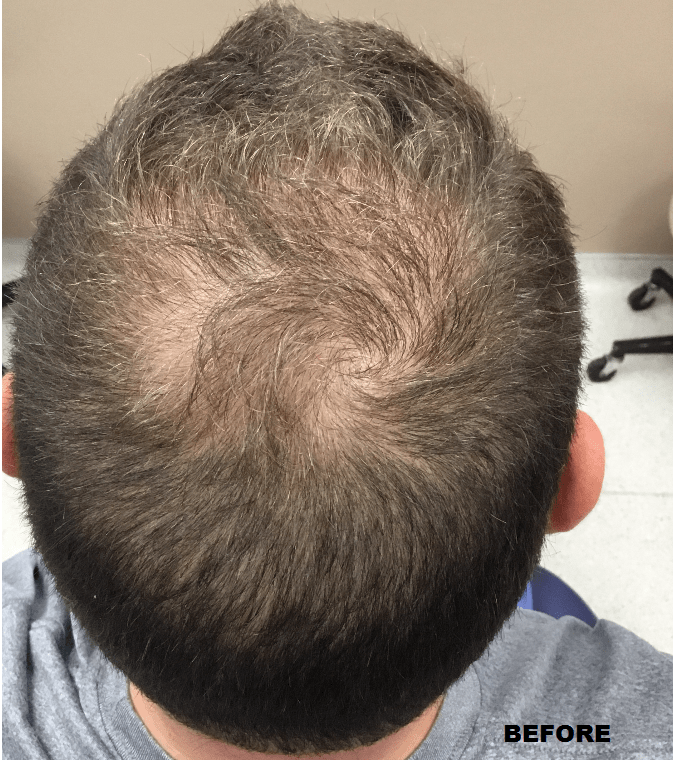What is PRP therapy?
PRP (platelet-rich plasma) therapy for hair loss is a three-step medical treatment in which a person’s blood is drawn, processed, and then injected into the scalp.
Some in the medical community think that PRP injections trigger natural hair growth and maintain it by increasing blood supply to the hair follicle and increasing the thickness of the hair shaft. Sometimes this approach is combined with other hair loss procedures or medications.
There hasn’t been enough research to prove if PRP is an effective hair loss treatment. However, PRP therapy has been in use since the 1980s. It’s been used for problems such as healing injured tendons, ligaments, and muscles.
PRP therapy is a three-step process. Most PRP therapy requires three treatments 4–6 weeks apart.
Maintenance treatments are required every 4–6 months.
Step 1
Your blood is drawn — typically from your arm — and put into a centrifuge (a machine that spins rapidly to separate fluids of different densities).
Step 2
After about 10 minutes in the centrifuge, your blood will have separated into in three layers:
- platelet-poor plasma
- platelet-rich plasma
- red blood cells
Step 3
The platelet-rich plasma is drawn up into a syringe and then injected into areas of the scalp that need increased hair growth.
Treatments required
A patient may require anywhere between 4-6 treatments. Each treatment is performed 4-6 wks apart. Maintenance treatments might be needed on an individual basis three to four times each year.
PRP for hair loss side effects
Because PRP therapy involves injecting your own blood into your scalp, you aren’t at risk for getting a communicable disease.
Still, any therapy that involves injections always carries a risk of side effects such as:
- injury to blood vessels or nerves
- infection
- calcification at the injection points
- scar tissue
There’s also the chance that you could have a negative reaction to the anesthetic used in the therapy. If you decide to pursue PRP therapy for hair loss, let your doctor know in advance about your tolerance to anesthetics.
Risks of PRP for hair loss
Be sure to report all medications you’re on before the procedure including supplements and herbs.
When you go for your initial consultation, many providers will recommend against PRP for hair loss if you:
- are on blood thinners
- are a heavy smoker
- have a history of alcohol or drug misuse
You might also be rejected for treatment if you’ve been diagnosed with:
- acute or chronic infections
- cancer
- chronic liver disease
- chronic skin disease
- hemodynamic instability
- hypofibrinogenemia
- metabolic disorder
- platelet dysfunction syndromes
- systemic disorder
- spsis
- low platelet count
- thyroid disease


Welcome to Zaytuna Medical Spa, where taking care of your skin is our only priority. Located in the prestigious intersection of peel, Vaughan, Toronto, and Peel regions. we offer high-end skin treatments in a clean and cozy atmosphere. We take pride in creating highly customized treatments that are as unique as you. Our services include Medical-grade Facials, Photo Facial, Laser Hair Removal, Botox, Fillers, PRP, Hair Restoration Therapies, Microneedling, and Chemical Peel. Our professional, friendly team is ready to assist you with the most luxurious treatments in skincare.
As a highly experienced Physician at Zaytuna Medical Spa, Dr.Sabha Cheema believes that healthy, glowing skin begins with exceptional care. Her experience proves that anyone can achieve healthy skin through proper advice, care, and customized treatments for your skin.
